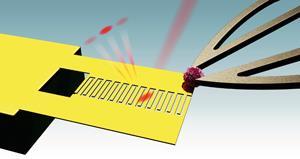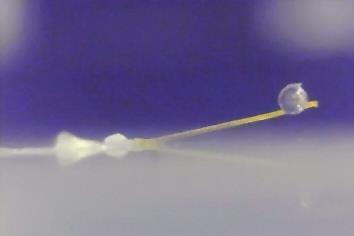New technique can weigh red blood cells, pollen grains and cancer cells

A new method for weighing the dry biomass of individual biological particles has been developed by researchers in the US.
Inspired by the select-and-weigh experience of shopping in a supermarket, Cagri Savran and colleagues at Purdue University, Indiana, set out to design a similar method for use on the microscale. ‘We wanted to make it as simple as a supermarket experience,’ says Savran. Their technique uses a microtweezer to pick and place particles on a cantilever-based resonator. Adding a specimen to the cantilever changes its resonance frequency, an observation which is then used to calculate the particle’s weight.
Current techniques measure the mass of every individual particle in a population, but Savran’s method goes one step further. ‘The beauty of it is the capability of isolating just one [particle] you want and weighing it; that is the novelty,’ he explains. Just like in a supermarket, you can pick-and-choose the item of interest, avoiding any unnecessary hassle. Designed to be simple and intuitive, the equipment set-up is compatible with established laboratory practices and could have applications in both academia and industry.

Savran’s team demonstrated the versatility of the system by characterising a range of molecules, spanning five orders of magnitude. From red blood cells (~0.04ng), to the eye–brain complex of an insect (~2395ng), an impressive array of measurements were collected. By combining the technique with focused ion beam milling, it can be adapted beyond single particle analysis to weigh a fragment or part of a whole cell.
‘This novel bioanalytical method could find applications in many different fields,’ says Hatice Altug, who develops techniques for analysing biomolecules at the Swiss Federal Institute of Technology in Lausanne (EPFL). ‘For example, you can inspect cancer cells under a microscope and observe that one looks different to the rest. With this method, you could pick that up, weigh it and perform further studies to decipher what is different.’
References
This paper is free to access until 22 September 2014. Download it here:












No comments yet